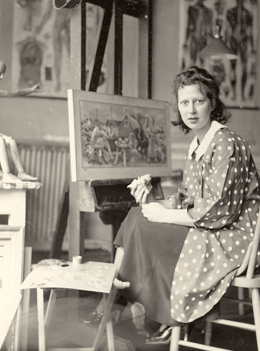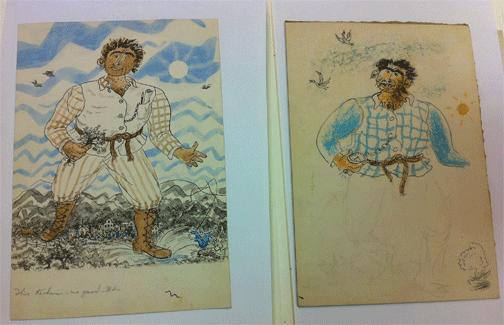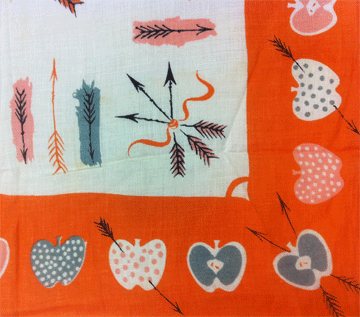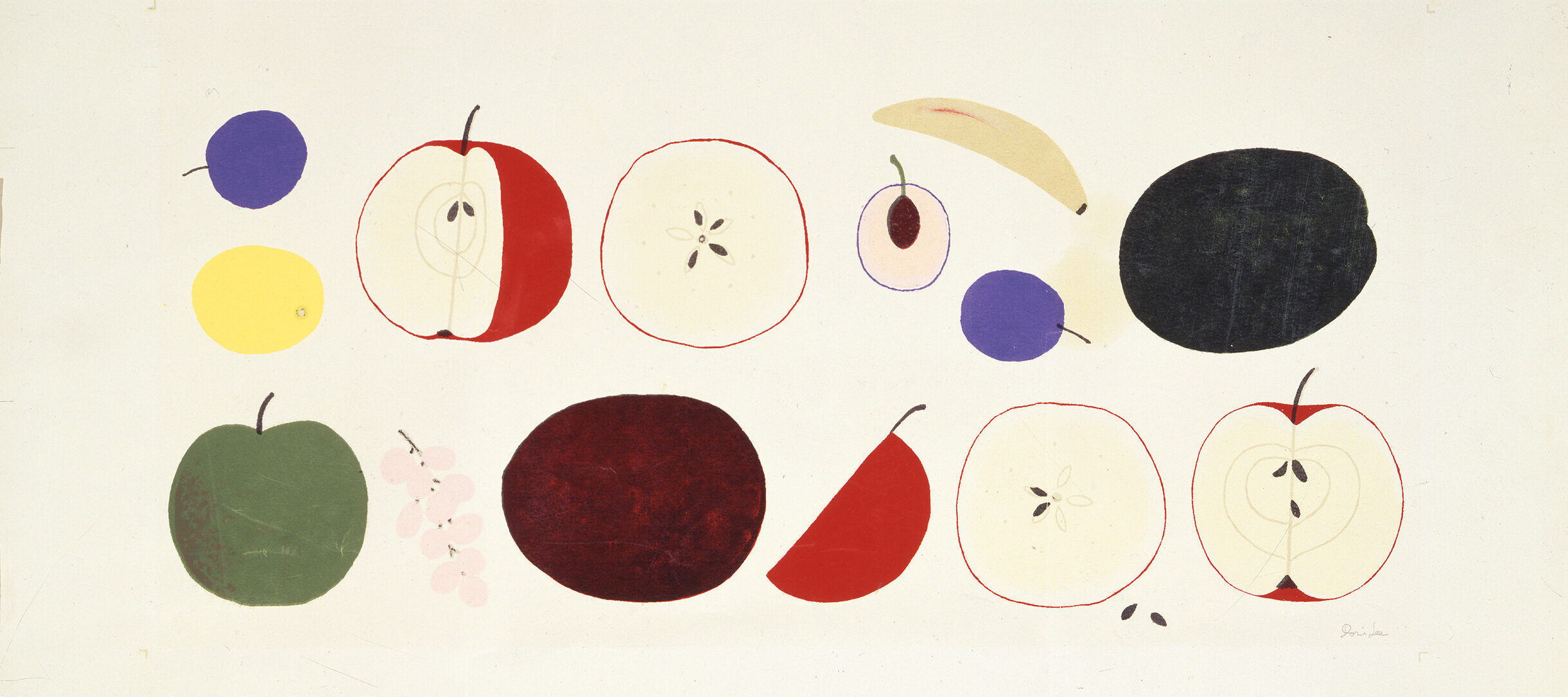Want to know more about a lesser-known woman artist? The history of NMWA? A history of fashion worn to NMWA Galas? Heather Slania, director of NMWA’s Library and Research Center, will dig through the NMWA Institutional Archives, the Archives of Women Artists, and the vast collection of books under her purview to answer your questions! The Special Collections of the Library and Research Center includes the personal papers of dozens of women artists and arts organizations. One such collection is the Doris Lee Collection.

Doris Lee, née Doris Elizabeth Emrick, was born on February 1, 1905, in Aledo, Illinois. In 1927, Lee graduated from Rockford College in Illinois, majoring in art and philosophy. Upon graduation, she married Russell Werner Lee, an engineer who later became a noted photographer with the Farm Security Administration. Lee studied painting during their honeymoon year abroad in Italy and France. She enrolled in the Kansas City Arts Institute in 1929 to study painting under Ernest Lawson. The following year, she studied under Arnold Blanch at the San Francisco School of Art. (Blanch would become Lee’s second husband after she divorced Russell Lee in 1939.)
During the 1930s, Lee worked in her New York studio on East 14th Street. She also spent time in Woodstock, New York, where she soon settled permanently. In 1935, her painting Thanksgiving won the prestigious Logan Prize at the Chicago Art Institute. The award brought immediate and controversial attention. While many critics found the painting’s subject provincial and cartoon-like, it was hugely popular with the public. A Depression-era audience responded to the work’s nostalgic depiction of simpler, happier times.
Only days after receiving the Logan Prize, Lee was awarded a commission from the United States Department of the Treasury to paint two murals for the General Post Office in Washington, D.C. (now the Ariel Rios Federal Building, which houses the Environmental Protection Agency). As part of the Works Projects Administration, Lee also painted a mural for the Post Office in Summerville, Georgia. In the following years, Lee’s paintings of rural America were included in annual exhibitions at the Carnegie Institute. Her painting Catastrophe was purchased by the Metropolitan Museum of Art in 1937, and she also exhibited regularly at the Walker Gallery in New York.

During the late 1940s and early 1950s, Lee undertook several commissions for Life magazine, including travel articles and illustrations that took her to such faraway locales as North Africa, Cuba, and Mexico. The sketchbooks from these trips are part of the collection in NMWA’s Library and Research Center. Lee’s trips to Hollywood in 1944 and 1945 for Life resulted in a series of paintings for two movies, The Harvey Girls and Oklahoma. Lee created illustrations for other magazines, including those published by Standard Oil and Abbott Laboratories, a pharmaceutical company, and she also undertook several book projects, including illustrating The Rodgers and Hart Songbook and children’s books such as James Thurber’s The Great Quillow. Greeting cards, calendars, menus, pottery, and fabric design also featured Lee’s work.

The Doris Lee Papers consist of a great variety of materials. Personal objects such as photographs, correspondence, awards, and financial and legal documents make up a large portion of the collection, which also includes ephemera such as periodicals, clippings, calendars, postcards, and exhibition catalogues. The collection also contains original work by Lee, which comprise figural sketches, sketchbooks, and drafts for commissioned work. A unique part of the collection is a series called Work Notes, which consists of clippings and photographs of people, animals, and places used by Lee as visual references.

The Work Notes series consists of over 1700 clippings, postcards, photographs, and textiles Lee gathered for reference in her work. Her clippings of people, animals, and places were taken from many sources, including popular magazines, specialized journals for livestock, and hundreds of postcards. Also included in the Work Notes are twenty-two handkerchiefs. Although when the collection was reprocessed the handkerchiefs found among Work Notes, several of the handkerchiefs are embroidered with “Doris Lee,” suggesting these were used as the personal handkerchiefs of Doris Lee and not necessarily used for reference. This collection, like many in NMWA’s Library and Research Center, provides insight into the work, artistic process, and time of a significant woman artist.
